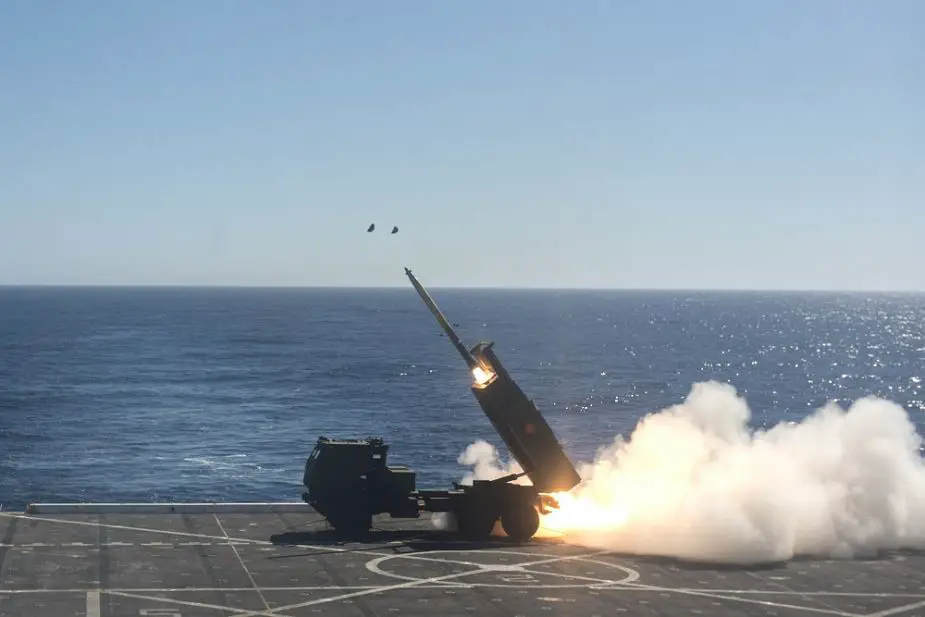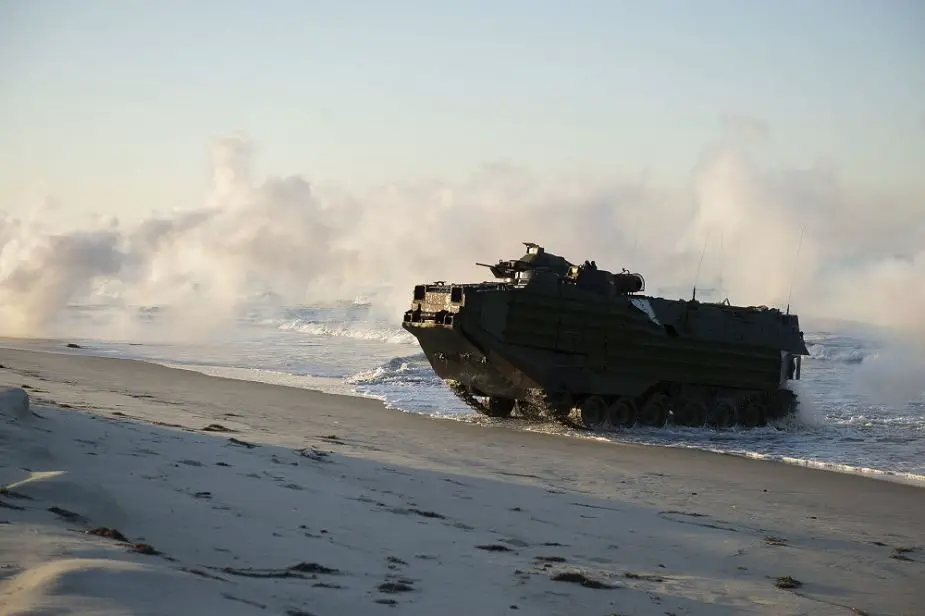Breaking news
New concept of U.S. amphibious capabilities during Dawn Blitz 2017.
United States armed forces validates a new concept for amphibious capabilities during the military exercise Dawn Blitz 2017. A key focus during this exercise was integration between the U.S. Navy and Marine Corps to establish a powerful maritime force capable of meeting modern threats. The team examined the composite warfare construct and other command and control arrangements to promote unity of effort in littoral warfare.

CAMP PENDLETON, Calif. (Oct. 27, 2017) Humvees drive away from landing craft air cushions (LCAC) on Red Beach during bilateral exercise Dawn Blitz 2017. (Source US MoD)
Dawn Blitz is a scenario-driven exercise designed to train and integrate Navy and Marine Corps units by providing a robust training environment where forces plan for and establish expeditionary advanced bases (EAB), execute an amphibious assault, engage in live-fire events, and integrate fifth-generation aviation capabilities in a land and maritime threat environment to test new integration and concepts of operation.
Planning and preparations began for Dawn Blitz in October 2016. This exercise is the culmination of a year's worth of effort by the 1st MEB and ESG-3 staffs. Participants include combined force of C3F, ESG-3, 1st MEB, 13th Marine Expeditionary Unit (MEU), Destroyer Squadron (DESRON) 21, USS Essex (LHD 2), USS Anchorage (LPD 23), USS Rushmore (LSD 47), USS Wayne E. Meyer (DDG 108), and Coastal Riverine Group 1. With supporting elements, seven ships and 33 aircraft made the exercise possible.
In scenario, Dawn Blitz began when the United Nations issued a Security Council Resolution prompting the U.S. to deploy at the request of a partner nation alongside other coalition members to restore the internationally recognized borders of a fictional country. The scenario’s sequence of events was designed to provide realistic, relevant training to integrate forces in new ways, critical to maritime power projection.
As the exercise progressed, units demonstrated the ability to establish EABs on San Clemente Island and Camp Pendleton, California, through tactical insertion of ground forces. The scalable EABs provided warfare commanders alternative options that enabled maneuver capabilities in the littoral environment.

The High Mobility Artillery Rocket System (HIMARS) is fired from the flight deck of the San Antonio-class amphibious transport dock ship USS Anchorage (LPD 23) during Dawn Blitz 2017. (Picture source United States MoD)
For the first time, the blue-green team validated that they could launch a High Mobility Artillery Rocket System (HIMARS) from Navy ship and hit a target at 70 kilometers. The proof of concept with the HIMARS as a sea-based fires alternative afloat provides warfare commanders greater flexibility when conducting precision strikes.
To further capitalize on the HIMARS capabilities, Marines and Sailors transported the weapons system to an EAB in a hypothetical island chain. There, the HIMARS could be used in a sea denial role in support of naval shipping transiting a narrow strait.
The culminating training event of Dawn Blitz occurred Oct. 27, when U.S. Navy's Assault Craft Unit 5, Beach Master Unit 1, U.S. Marine Corps' 1st Battalion, 4th Marine Regiment, and the Japan Ground Self Defense Force infantry soldiers led an assault on Camp Pendleton's Red Beach. Eighteen amphibious assault vehicles and six landing crafts, air cushion landed on the beach for additional training ashore, and to establish the final EAB.
Overall, Dawn Blitz 2017 brought 2,900 Sailors and 1,600 Marines together to train, validate new concepts, and build ties. The success of this exercise continues to show the strength of the Navy-Marine Corps team, and the demonstration of our lethality and ability to fight and win in the future operating environment.

An amphibious assault vehicle (AAV) attached to Japanese Maritime Self Defense Force (JMSDF) emerges from the ocean onto Red Beach for bilateral exercise Dawn Blitz 2017.



















